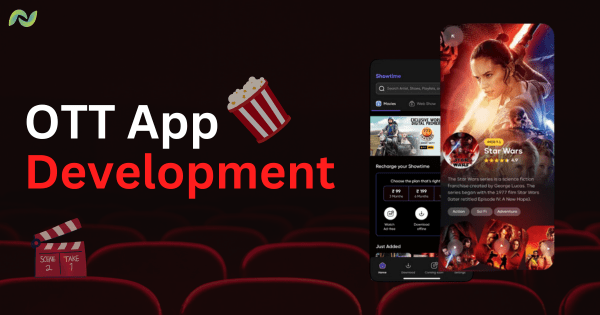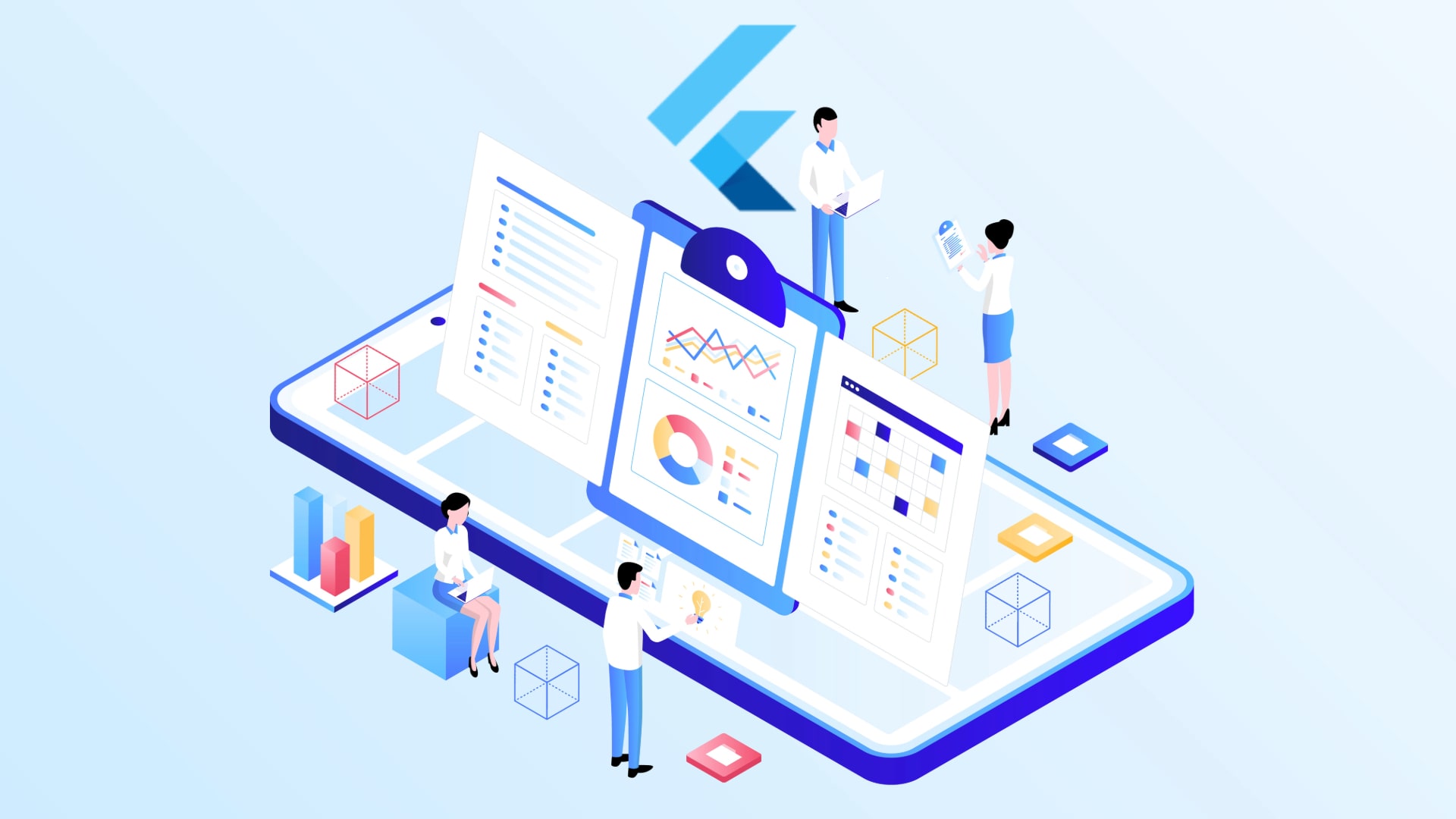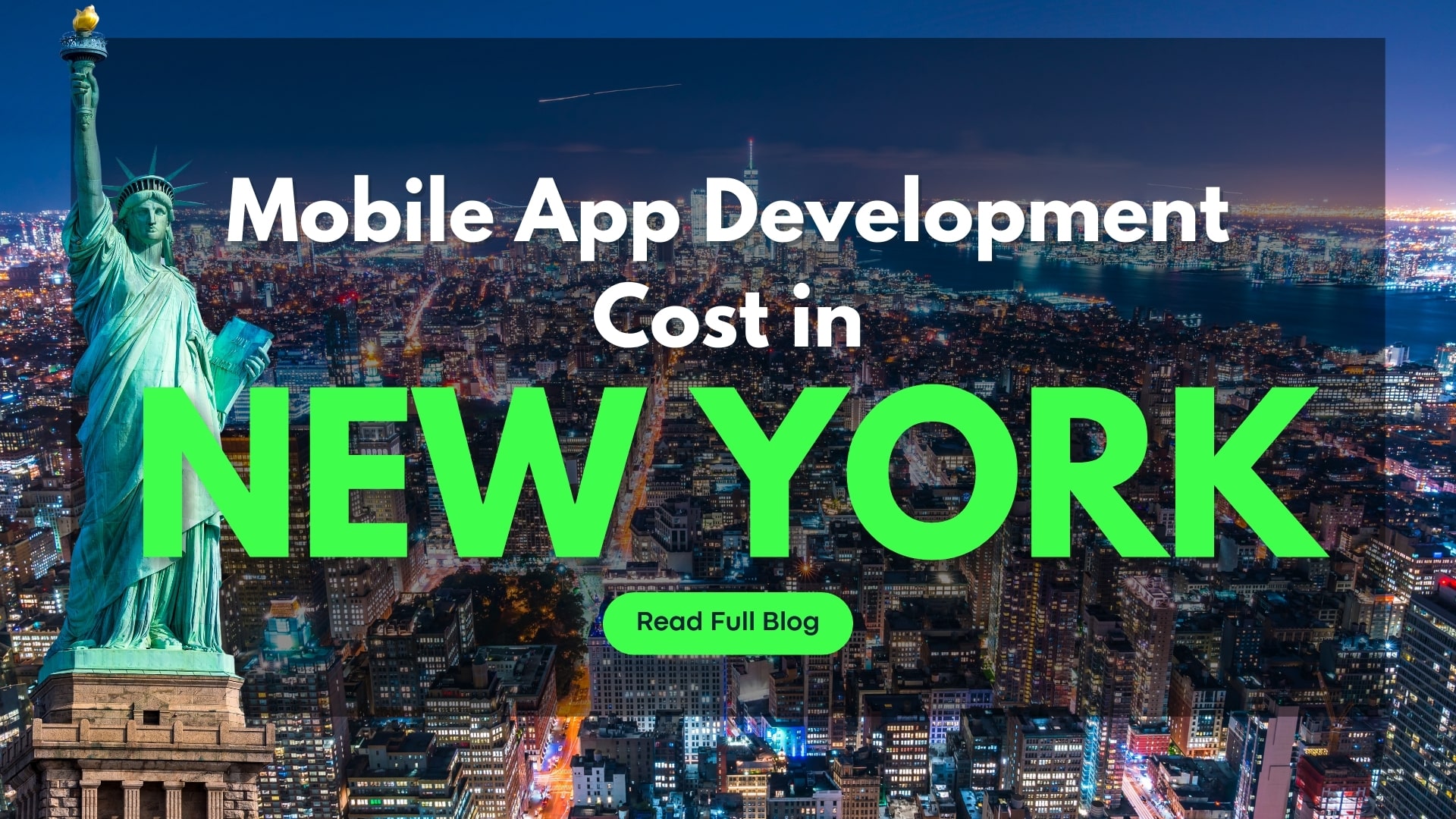OTT Platform Development: Features, Cost, and Recommendations
How to Develop an OTT App?
These days OTT has been a trend for online users to watch online movies, web series, and favorite TV shows. Wait! Just rewind the time and think Could we watch our favorite web series and one-time show at our desired time? So before jumping to OTT Development. Let’s discuss one more experience “There was a time when a movie was released in theatres most people used to worry if they missed out on this movie and then I had to wait for a year to get the DVD, VCD, or watch it on television whenever scheduled by channels. In this guide, we will discover the process, factors, and technology used in OTT app development.
Table of Contents
ToggleWhen Was OTT First Used | A Brief History?
OTT stands for Over the Top and was first used in the early 1990s in the telecommunications sectors to describe services delivered over the Internet, circumventing traditional broadcasting systems. As the internet grew in usage, OTT began to refer more specifically to Video streaming App Development platforms that delivered video, audio, and other content directly to consumers without requiring traditional cable or satellite subscriptions.
Global Market Data of OTT Apps
According to Statista, the OTT app market worldwide is expected to grow at a CAGR of 6.56% from $343.82 billion in 2025 to $443.29 billion in 2029. The fastest-growing segment is OTT video ads at $207.52 billion in 2025. The United States dominates the industry with a revenue of $146.25 billion. User numbers are projected to reach 4.9 billion by the year 2029, with penetration growing from 52.8% in 2025 to 61.0% in 2029. The average revenue per user (ARPU) stands at $83.28 in 2025.

What is OTT app development?
Since entertainment and media businesses are booming and becoming millionaires through OTT apps or software development services, have you ever been fascinated by how to create OTT apps like Netflix? OTT Over the Top application development alludes to the most common way of making applications that give video (motion pictures) or sound substance over the web, bypassing customary link or satellite television stages. These apps permit clients to stream OTT media content straightforwardly to their gadgets, such as smartphones, tablets, smart TVs, or gaming consoles
Features of OTT apps
[1] Personalization: OTT virtual products frequently give customized content ideas as they get ready for definite examination of clients’ way of behaving.
[2] No Customary Telecom: OTT applications sidestep conventional link or satellite television stages.
[3] Multi-Device Support: There are no device-specific restrictions. Apps can run over devices, including smartphones, tablets, smart TVs, and other gaming equipment.
[4] OTT Media Streaming: OTT products stream video or audio content via global connectivity.
Elements of OTT platform app development
[1] Content Administration Framework (CMS): OTT applications are bound with each conceivable most recent element including CMS. CMS is a particular device to oversee and sort out computerized content, it incorporates altering, transferring, and erasing content.
[2] Video Player: A video player, an output of OTT video app development is utilized to play back video content or OTT media, with highlights, for example, playback controls moreover: speed, quality, captions, and shut inscriptions.
[3] Client Validation: This foolproof security (2-factor authentication) instrument is utilized to get client accounts and guarantee, that main approved clients can get to profiles and rest functionalities.
[4] Payment Gateway: An installment door is utilized to handle installments and memberships, with highlights like repeating installments and invoicing.
[5] Analysis and Reporting: It is an extremely flexible tool in OTT applications where one can follow client behavior(likes or dislikes), content consumption(shared media or offline downloads), and socioeconomics.
[6] Multiple Content Categorization: With this rich feature companies are reshaping their future as video content is more impactful rather than text. Give your content an organized look, making it easier for users to group movies, shows, and genres.
Additional feature integration in OTT apps
Offline downloading
Multi-device Support
Forward and Backward features
Push Notifications
Social Media Integration
Watchlist
User Profile
Search bar
Subtitles
Multilingual Content
In-App purchase
Parental Control
Prevent Abusive and violative content
Pros of OTT Platform Development Services
[1] Expanded Reach: OTT applications came internationally, without the requirement for a conventional telecom foundation.
[2] Personalization: These applications give individualized OTT content thoughts, in light of the way of behaving and inclinations of the clients.
[3] Adaptation: OTT applications produce enormous benefits through membership-based models, promoting, and value-based models.
[4] Information Investigation: significant experiences through OTT applications similarly: conduct, including content utilization, connected with time on happiness, and socioeconomics.
Challenges of OTT App Development
[1] Content Licensing: OTT applications ask for content licensing agreements, which can be a little bit hectic and time-consuming process in OTT TV app development.
[2] Content Delivery: OTT apps require a scalable smooth content delivery network (CDN), to guarantee high-quality video streaming.
[3] User Engagement: Applications require operational functionalities that increase user engagement rate, and make personalized social recommendations.
[4] Security: OTT applications require strong safety efforts, to safeguard client information and forestall robbery.
OTT Application development for Various Platforms
[1] Apple TV App Development
Apple TV application development emphasizes building seamless and intuitive apps that take full advantage of the great capabilities of Apple’s ecosystem. The apps provide high-end streaming experiences with 4K resolution and Dolby Atmos sound support. Functionality through Siri and Apple’s native APIs guarantees easy navigation and voice control, providing a premium entertainment experience for users.
[2] Fire TV App Development
Fire TV app development is intended to provide entertaining streaming apps that are optimized for Amazon’s Fire TV devices. The apps are created to leverage Alexa voice control, offering hands-free navigation and personalized suggestions. With high-definition playback support and integration with Amazon services, Fire TV apps provide users with a flexible and interactive viewing experience.
[3] SmartTV App Development
SmartTV application development targets the creation of feature-rich applications that are compatible with multiple Smart TV brands and models. The apps are built to support smooth playback, dynamic user interfaces, and support for mainstream streaming services. Through platform-specific SDKs, developers achieve seamless integration and improved performance on devices such as Samsung, LG, and Android-based Smart TVs.
[4] Video streaming App Development
Video streaming app development focuses on developing applications that provide seamless playback, adaptive streaming quality, and intuitive interfaces. The apps are developed to provide live and on-demand content, enabling users to view videos across various devices. Strong content delivery networks (CDNs) and encryption provide rapid streaming and data protection.
[5] Live Conferencing Systems development
Live conferencing systems development includes designing platforms that support real-time video, audio, and screen-sharing communication. These systems are designed with optimal latency, HD video, and secure data transport. Features such as chat, file sharing, and recording are included to ensure end-to-end business meetings, webinars, and virtual event solutions.
OTT Development Services
[1] Custom OTT App Development
Companies can obtain customized OTT applications that fit their brand’s personality as well as the needs of their users. Experienced developers design secure and scalable OTT apps filled with engaging features to attract audiences. From live streaming to on-demand viewing, and multiple device compatibility to advanced analytics, solutions offer everything.
[2] OTT Integration
Smooth integration with third-party solutions, payment processors, analytics, and beyond is critical to any OTT service. Skilled integration services guarantee seamless performance with little or no downtime, making content delivery through perfect synchrony and optimum compatibility.
[3] OTT User-Interface Development
A well-designed user interface that looks good and works well can profoundly increase audience interest. UI developers concentrate on providing beautiful and incredibly functional designs such that navigation remains easy and achievable. A comfortable and good-looking platform guarantees a better user experience.
[4] OTT App Maintenance
Regular support and maintenance are essential to ensuring an OTT platform operates optimally. Expert maintenance services take care of bug fixes, updates, and performance enhancements so that companies can concentrate on providing excellent content while leaving technical issues to the professionals.
[5] OTT Testing
Thorough testing services provide the best performance by encompassing functionality, compatibility, performance, and security. Real-life situations are emulated to ensure that the OTT app performs flawlessly on every device and network, providing a bug-free experience to the audience.
[6] OTT Migration
Migrating a current platform or content to a new OTT platform can be hassle-free through skilled migration solutions. The services offer minimal risks and maximal data integrity and smoothness, enabling enterprises to bring their OTT experience to the next level easily.
OTT Application Development Process
[1] Plan and Research
The initial step in the development process is careful planning and research. Know your audience, study the competition, and determine the major features that will make your app stand out. Do market research to find out what content formats are trending and what streaming habits people have, setting the foundation for a successful project.
[2] Define Requirements
After the planning stage is over, outline the technical and functional specifications of the OTT app. State platform compatibility (iOS, Android, web), content delivery options, and core features such as user profiles, content categorization, and recommendations. Proper documentation at this stage will facilitate hassle-free development thereafter.
[3] Design UI/UX
Developing an intuitive and visually wonderful user interface is essential for OTT apps. Keep working on providing a seamless navigation experience, engaging content configurations, and interactive functions. Prioritize responsive design to provide uniform performance on all devices and screen sizes.
[4] Build Backend
The backend is the heart of your OTT application, managing data storage, user authentication, content, and streaming protocols. Implement scalable frameworks and cloud platforms to support scalability and high availability. Integrate content delivery networks (CDNs) for improved streaming speed and low latency.
[5] Develop Frontend
The OTT app’s front end should be dynamic and user-friendly. Use contemporary technologies such as React Native, Flutter, or Swift to develop cross-platform interfaces. Prioritize providing seamless video playback, interactive menus, and personalized content suggestions to enhance user engagement.
[6] Integrate Streaming
Streaming integration is what lies at the core of any OTT app. Implement adaptive bitrate streaming (ABR) to ensure high-quality playback under fluctuating network conditions. Employ proven streaming protocols like HLS or DASH and include live and on-demand content support
[7] Secure the App
Security is of the utmost importance when handling digital content and user information. Use multi-layered security such as encryption, DRM (Digital Rights Management), and token-based authentication. Protect content from piracy and unauthorized access to establish user trust.
[8] Set Up Monetization
Monetizing your OTT app in the right way guarantees long-term income. Select the correct model, be it subscription-based (SVOD), ad-supported (AVOD), or pay-per-view (TVOD). Incorporate secure payment gateways and provide flexible pricing plans to reach a larger audience.
[9] Test Extensively
Thorough testing is essential to ensure a perfect user experience. Perform performance, usability, and security tests to detect and fix bugs. Test the app on different devices, operating systems, and network conditions to ensure smooth and bug-free operation.
[10] Launch and Maintain
After testing, release your OTT app on popular platforms with a sound marketing strategy. Collect user reviews and track post-launch performance metrics. Regularly update the app to introduce new features, improve performance, and address any upcoming issues to keep users satisfied.
Best Monetization Strategies You Can Follow
[1] SVOD (Subscription Video On Demand)
[2] TVOD (Transcational Video On Demand)
[3] AVOD (Ad-Supported Video On Demand)
How Much Does it Cost to Build an OTT App?
Over-the-top (OTT) apps are taking the entertainment world by storm, giving users the power to stream movies, TV shows, sports, and more; anytime, anywhere. Think Netflix, Disney+, and Amazon Prime Video. If you’re planning to build your own OTT platform, one of the first things on your mind is probably the cost. Let’s break it down!
[1] Factors Affecting OTT Mobile App Development Cost
Creating an OTT app is not a one-size-fits-all solution. The price may differ significantly based on a variety of factors:
[A] Platform selection (Mobile, Web, Smart TV): Apps for multiple platforms add to the bill. Native apps (iOS/Android) tend to be more expensive than web apps.
[B] Features and Functionalities:
User Profiles and Personalization: Personalized profiles and recommendations introduce complexity.
Video Streaming Quality: HD, 4K, and adaptive streaming support are more costly.
Content Management System (CMS): Strong backend for content library management.
Payment Gateway Integration: Subscriptions, pay-per-view, and one-off purchases.
Offline Viewing: Making downloads available increases development time.
Live Streaming and Real-Time Chat: Complex but very engaging features.
Design and User Experience (UX): A good and appealing interface is time- and skill-consuming, increasing the price.
[C] Backend Infrastructure:
Content Delivery Network (CDN): Facilitates quick, worldwide streaming.
Cloud Hosting: Stable storage and streaming features.
Video Encoding and Transcoding: Converting video to various formats.
[D] Security Measures:
DRM (Digital Rights Management): Guards content against piracy.
User Data Encryption: Protects user data.
Third-Party Integrations: Social logins, analytics, push notifications, and others.
[E] Maintenance and Updates: Periodic costs of enhancements and fixes.
[2] OTT App Development Cost Breakdown
Design & UI/UX: $1,000 to $5,000
Frontend Development: $1,000 to $5,000
Backend & API Development: $5,000 to over $50,000
Video Streaming Integration: $5,000 to $15,000
CMS & Admin Panel: $1,000 to $5,000
Testing & QA: $1,000 to $4,000
Maintenance & Support: $2,000 to $10,000/month
Total Cost:
Basic OTT App: $16,000 to $30,000
Advanced OTT App: $30,000 to $400,000+
Tech Stack to Use in OTT Development
[1] Frontend Development
Languages
HTML5
CSS3
Kotlin
Swift
Dart
Frameworks
Raect.js
Veu.js
Angular.js
Flutter
React Native
Xamarin
UI Libraries
UIKit
Android UI Toolkit
Cupertino
[2] Backend Development
Languages
Ruby
Node.js
Python
Java
Frameworks
Spring Boot
Django
Express.js
Ruby on Rails
[3] Databases
Cassandra
MongoDB
MySQL
Postgre SQL
[4] Content Delivery
Protocols: HLS and DASH
CDNs (Content Delivery Networks): Akamai, Cloudflare, Amazon CloudFront
[5] Cloud Services providers
AWS
GCP
Microsoft Azure
[6] Storage
Azure Blob Storage
Amazon S3
Google Cloud Storage
[7] APIs
RESTful APIs
JSON
XML
GraphQL
[8] IDEs
Xcode
Android Studio
Visual Studio Code
[9] Version Control
Git
GitHub
Gitbucket
GitLab
[10] Interface Design tools
Figma
Adobe XD
Sketch
[11] Continuous Integration/Continuous Deployment
Jenkins
Travis CI
CircleCI
[12] Testing Tools
Unit Testing
XCTest
JUnit
UI Testing
Espresso
Appium
Selenium
Performance Testing
Firebase Performance Monitoring
New Relic
[13] Other Tools and Technologies
Payment Gateway
Braintree
Paypal
Stripe
Analytics and Reporting
Google Analytics
Datadog
Mixpanel
New Relic
Crash Reporting
Firebase Crashlytics
Push Notifications
Firebase Cloud Messaging
Apple Push Notification Service
How do you select an OTT app development company?
Choosing the appropriate OTT (Over-The-Top) app development company is important for providing high-quality, interactive, and secure video streaming experiences. With so many providers available, it might be difficult to choose the right partner. Here’s a complete guide to assist you in making a well-informed decision.
[1] Expertise in OTT App Development
A good app development firm must showcase significant experience in creating scalable and customized video streaming platforms. Check for firms that provide complete control over user accounts, content management, and user interfaces (UI). Their expertise must allow the development of apps that are compatible with different devices, such as smartphones, tablets, and smart TVs.
Key Points to Consider:
Well-established track record in OTT platform development.
Skill in crafting intuitive and responsive UI/UX.
Personalized solutions designed to meet your business needs.
[2] Content Security and Data Protection
Security is a top priority while streaming high-end content. The top app development companies use strong security features to safeguard your intellectual property and content.
Security Features Recommended:
AES Encryption: Protects your content from unauthorized access.
Digital Rights Management (DRM): Prevents piracy of copyrighted content.
IP-Based Access Control: Limits content delivery to authorized users only.
Through the implementation of these cutting-edge security features, you reduce the potential for data leakage and have complete control over content dissemination.
[3] High-Quality Streaming with Minimal Buffering
Perhaps the greatest challenge to OTT platforms is providing smooth, buffer-free streaming, even on low-network connectivity. An honest development agency must use Content Delivery Networks (CDNs) to deliver content efficiently across different servers, lessening buffering and lag.
What to Look For:
Utilization of real-time data management to reduce transmission capacity without compromising quality.
Quicker loading times and less buffering to improve the viewing experience.
Ability to render crystal-clear video no matter the device or bandwidth.
[4] Optimal Content Delivery through CDN Integration
CDN integration is essential for maintaining fast and reliable content delivery. An efficient CDN system ensures that users receive content from the nearest server, reducing latency and improving playback quality.
Benefits of CDN Integration:
Improved load times and reduced buffering.
Smooth streaming, even in remote locations.
Enhanced viewer retention through uninterrupted playback.
[5] Cloud-Based Storage Solutions
Scalability is an imperative feature of any OTT service. Cloud storage offerings like Amazon Web Services (AWS), Google Cloud Platform (GCP), and Microsoft Azure offer scalable storage to store burgeoning content libraries and rising user requirements.
Benefits of Cloud Integration
Effortless storage expansion without affecting performance.
High availability and redundancy of data.
Dynamic solutions for dealing with surges in content upload and viewership.
[6] Diverse and Dynamic Functionality
A well-designed OTT app should go beyond basic streaming by offering diverse features that increase user engagement. Whether it’s live TV streaming, on-demand content, or interactive features, the company should be able to build versatile platforms.
Key Functionalities to Include in OTT Apps:
Live video creation and broadcasting for real-time engagement.
Dynamic content management for easy updates and content organization.
Seamless integration of third-party services for added functionality.
Selecting the appropriate development firm needs careful analysis of their technical skills, experience, and dedication to providing high-quality and secure streaming solutions. Ensure that the companies you select offer not only top-notch UI/UX but also content security, scalability, and dynamic functionality. One such OTT app development company is Next Olive, with over 13 years of experience in OTT app development services with over 100 dedicated and experienced OTT app developers. With the right experienced and creative development team, you can get the best out of your platform and provide a smooth streaming experience to your audience.
Frequently Asked Questions
What is the cost of OTT platform development Services?
The cost to build an OTT App like Hotstar and Netflix can vary greatly depending on factors such as type, size, and security level of the platform. A reliable OTT platform development company would charge as low as $10,000. However, on average, an OTT application development cost can go from $35,000 to over $200,000, and the following factors also contribute to the cost:
• Techstack
• Traffic management
• Complexities of the OTT app
• Advanced features
• Resources
• Timeline
Which company is the leading OTT app development company in USA?
Next Olive is the leading OTT mobile app development firm in USA, and has expertise in creating top-level OTT applications that convey consistent and engaging streaming experiences. Our OTT engineer’s configuration highlights rich arrangements that help in real-time streaming, video-on-demand, multi-device similarity, and brilliant adaptation systems.
What are the popular platforms for launching an OTT app?
The best and very preferable platforms for the OTT app launch are Android, iOS, TV apps, iPad, Apple TV, Amazon Fire TV Stick, macOS, and Windows.
What benefits do custom OTT apps offer?
The list of benefits of custom OTT apps is given below:
• Compatibility across all devices
• Connectivity
• Convenience
• Scalable CMS
• Video monetization
• Advanced video analytics
What is the cost of developing a video streaming app similar to Disney+?
To give you an estimated range, the cost of developing an application like Disney+ varies from $40,000+ to $1,00,000+. It depends on numerous factors (Resources, Timeline, and advanced functionalities) and business requirements.
Do you integrate AI and ML in your OTT app development solutions?
Yes, we integrate Artificial Intelligence and Machine Learning in our OTT solutions. AI and ML make the application highly intelligent and autonomous.









